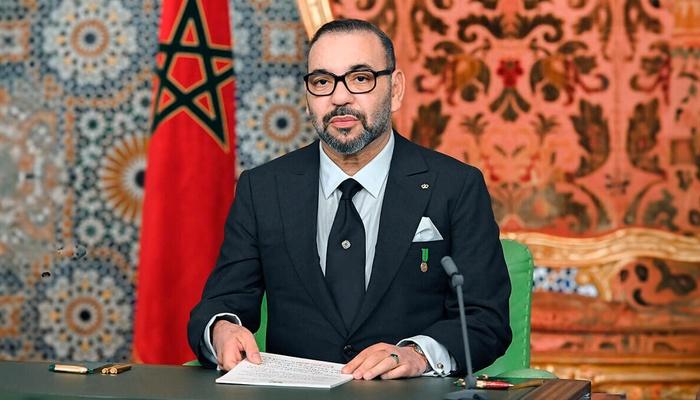The Green Deal Industrial Plan: the right way forward for a new European industrial policy?
On 1 February 2023, the European Commission presented the Green Deal Industrial Plan, consistent with the objectives outlined in the 2019 European Green Deal. The Green Deal Industrial Plan aims to provide a more favourable bureaucratic and institutional framework for the increase of European Union (EU) production capacities for clean tech and, generally, for zero-emission products. The plan fits perfectly into the framework of the Green Deal, as it should outline a new European industrial policy that supports the goal of making Europe the first climate-neutral continent. For many observers, this would be a ‘new industrial revolution’. At the announcement of the Plan during the World Economic Forum in Davos, European Commission President Ursula von der Leyen said the Plan is about making Europe the home of clean technology and industrial innovation. As made clear during the speech, the Green Deal Industrial Plan is a response to the concerns caused by the Transatlantic Inflation Reduction Act (IRA), the US plan that Berlaymont Palace fears will attract European investment overseas. The IRA provides for a massive package of public subsidies totalling USD 369 billion to be distributed to companies. Washington’s goal is to finance clean energy production, meet the targets of the Paris Agreement and promote the rebalancing of value chains within the new continent. It goes without saying that European companies do not enjoy the same facilities and the single market may suffer from the loss of industrial competitiveness as a result. The Green Deal Industrial Plan is thus a way for the EU to carve out a space for itself in the clean tech market, looking back with regret at the failed EU-US free trade agreement (2017), which instead could have avoided the tensions caused by the IRA by putting the EU on a par with Mexico and Canada.
The Plan was created in light of these assumptions and is part of a wide-ranging system that includes the already existing Green Deal and RePowerEU. The Plan is structured around four pillars: (1) creating an intuitive and simplified regulatory framework; (2) speeding up access to finance; (3) improving and upgrading workers’ skills; and (4) free trade to create resilient supply chains.
The first pillar provides for a simpler and more accessible regulatory framework that ensures favourable conditions in strategic sectors for achieving zero emissions. These sectors include, as stated by von der Leyen, wind, solar, clean hydrogen and other areas whose demand is increased by the NextGenerationEU and REPowerEU plans. In order to achieve the outlined goals, the European Commission will work on two different plans that are complementary and whose guidelines have already been defined: the Net-Zero Industry Plan and the Critical Raw Materials Act. The two plans need to be accompanied by a reform of the electricity market in order to protect consumers from excessive price volatility and guarantee them fair and equitable access to clean and permanent energy. With the Net-Zero Industry Plan, the European Commission wants to provide a resilient industrial base in clean energy to achieve the goals of the von der Leyen agenda. To do this, it is necessary to implement simplifications in the administrative procedures for obtaining authorisations for clean-tech industries. The Critical Raw Materials Act, on the other hand, aims to strengthen European value chains through the identification of projects on mineral resources and raw materials, as well as an external policy on critical raw materials. To do this, the proposal aims to establish a network of European agencies to deal with the procurement of critical raw materials, in order to avoid the dominance of unilateral national choices and thus the creation of greater market competition that would lead to higher prices.
The second pillar is based on accelerating access to finance, with the aim of unlocking a large financing capacity for industrial segments committed to the green transition. The Commission intends to continue to ensure equal access to finance by also making use of the allocations already agreed under REPowerEU and InvestEU. The latter allocates some EUR 26 billion to enable investors to take higher risks that they would not otherwise bear. The support for the mentioned projects is expected to attract additional investors and mobilise almost EUR 400 billion in investments throughout the EU. However, being a short-term programme, in the long run the Commission is working on establishing a European Community Fund, a fund also discussed at the extra-ordinary European Council on 9-10 February. As stated in the final declarations, 'The European Council takes note of the Commission’s intention to propose a European Sovereignty Fund before summer 2023 to support investments in strategic sectors. Pending this step, rapid changes were promoted to the Temporary State aid Crisis Framework adopted after Russia’s invasion of Ukraine to support European economies. At the moment, the Commission would like to transform such an instrument so that it is not only dedicated to crisis resolution, but also to crisis transition. Essentially, one would talk about changing the Temporary State aid Crisis Framework into a Temporary State aid Crisis and Transition Framework. This proposal is intended to provide a temporary framework to stimulate investment by facilitating the rapid introduction of renewable energies at the production and structural level.
The third pillar concerns the labour market. The green transition requires new job skills that are currently lacking, and therefore it is necessary to orient the training system towards so-called ‘green jobs’ also through Net-Zero industrial academies that develop strategic skills to relate to the new industrial models. The European Commission, in this regard, intends to make the year 2023 a European Year of Skills, i.e. a year of preparation that will enable industrial settings to be equipped with a workforce that is competent to stimulate and support sustainable growth.
Lastly, the Commission pushes for a broader project that includes business partners that are considered similar and reliable. The fourth pillar pushes for the use of trade as an enabler for the green transition. Such comprehensive cooperation, in the Commission’s view, must follow European principles of fair competition and open trade. Within this framework, the Commission will formulate free trade agreements to support the transition. The aforementioned Critical Raw Materials Act for the creation of a ‘critical raw materials club’ will also help. The intention is to strengthen Europe’s strategic autonomy, to work for a green industry without unstable partnerships and to reduce dependence on raw materials from third countries, such as China, which, for example, supplies 98% of the raw materials Europe uses. Without European-level planning for the purchase of critical materials, the prices of lithium, cobalt, bauxite, will continue to reach cost peaks and make Europe’s climate-neutral goal remote due to the race and struggle to purchase them. This is where the Critical Raw Materials Act comes in, with the aim of creating a network of European agencies that can anticipate the risk of unilateral choices at national level. The partnerships that the EU wants to promote specifically concern African and Latin American states, e.g., the Democratic Republic of Congo for cobalt and copper and Indonesia for nickel.
The linearity of such a plan seems clear until one goes into the details of the technicalities. In fact, there have been many criticisms raised by analysts and stakeholders who have branded the plan as vague. As far as the first pillar is concerned, the Green Industrial Plan does not make explicit which clean technologies are eligible for funding. In a press release on 1 February 2023, the director general of NuclearEurope, Yves Desbazeille, declared his support for a project involving renewable energies and zero-emission technologies, but, at the same time, increased pressure for nuclear power to be categorized as a zero-emission technology. Furthermore, the strategy promoted by the Commission would be too limited to certain sectors for clean technologies and would lack concreteness with regard to private financing and fiscal policy. The greatest criticism, however, comes in respect of the decarbonization of heavy industry. This, according to many, is neglected by the Commission, which underestimates its leadership potential in clean technologies. Criticism comes not only from those who fear the proposal’s lack of clarity in implementation and its ineffectiveness, but also from those who oppose the way the programme is financed. As previously discussed, the possibility of establishing a sovereign wealth fund will be discussed in the coming months, during the revision of the multi-annual budget. In the meantime, the Commission aims at a relaxation of the state aid rules. Again, the fear is to exacerbate the already existing disparities at European level in the autonomous fiscal capacities of the Member States (especially with respect to France and Germany). By structuring its industrial policy strategy on state subsidies, the proposal would not have the strength to create aggregate potential at European level but would only risk to increase the already existing North-South, as well as North-East divide. It would be detrimental to support an industrial revival at the expense of European unity and cohesion.





